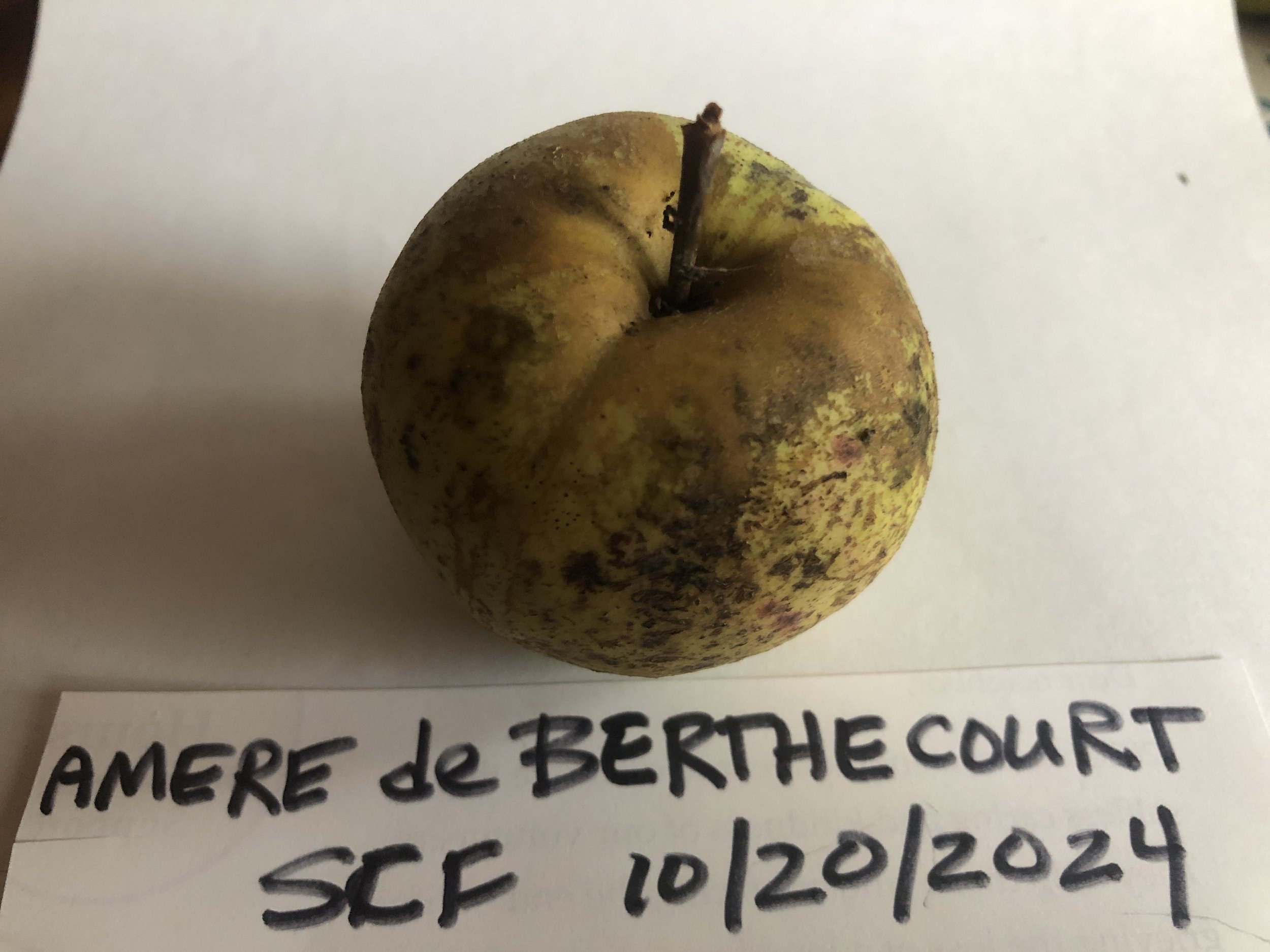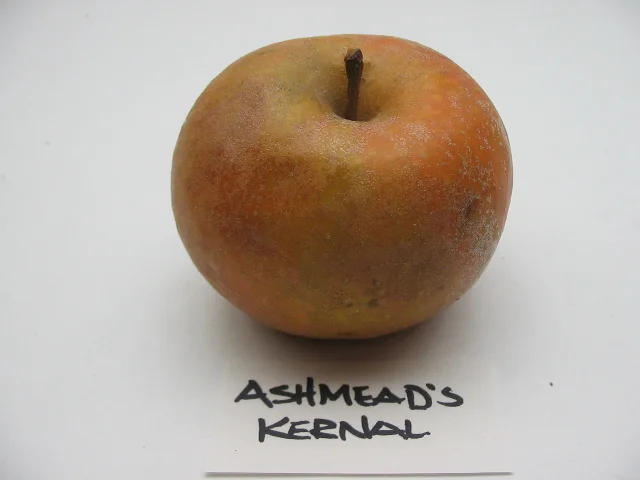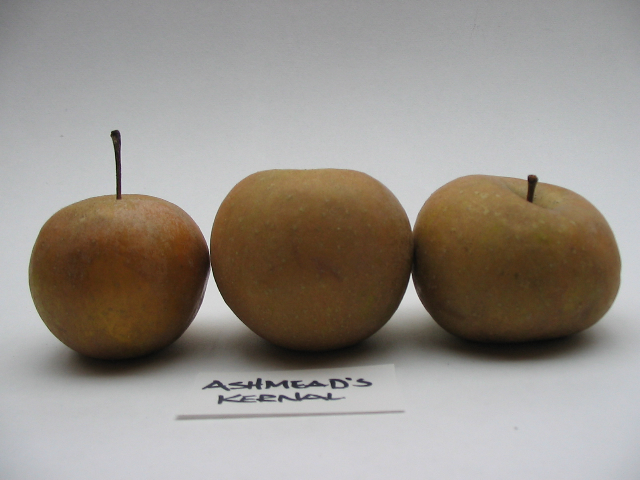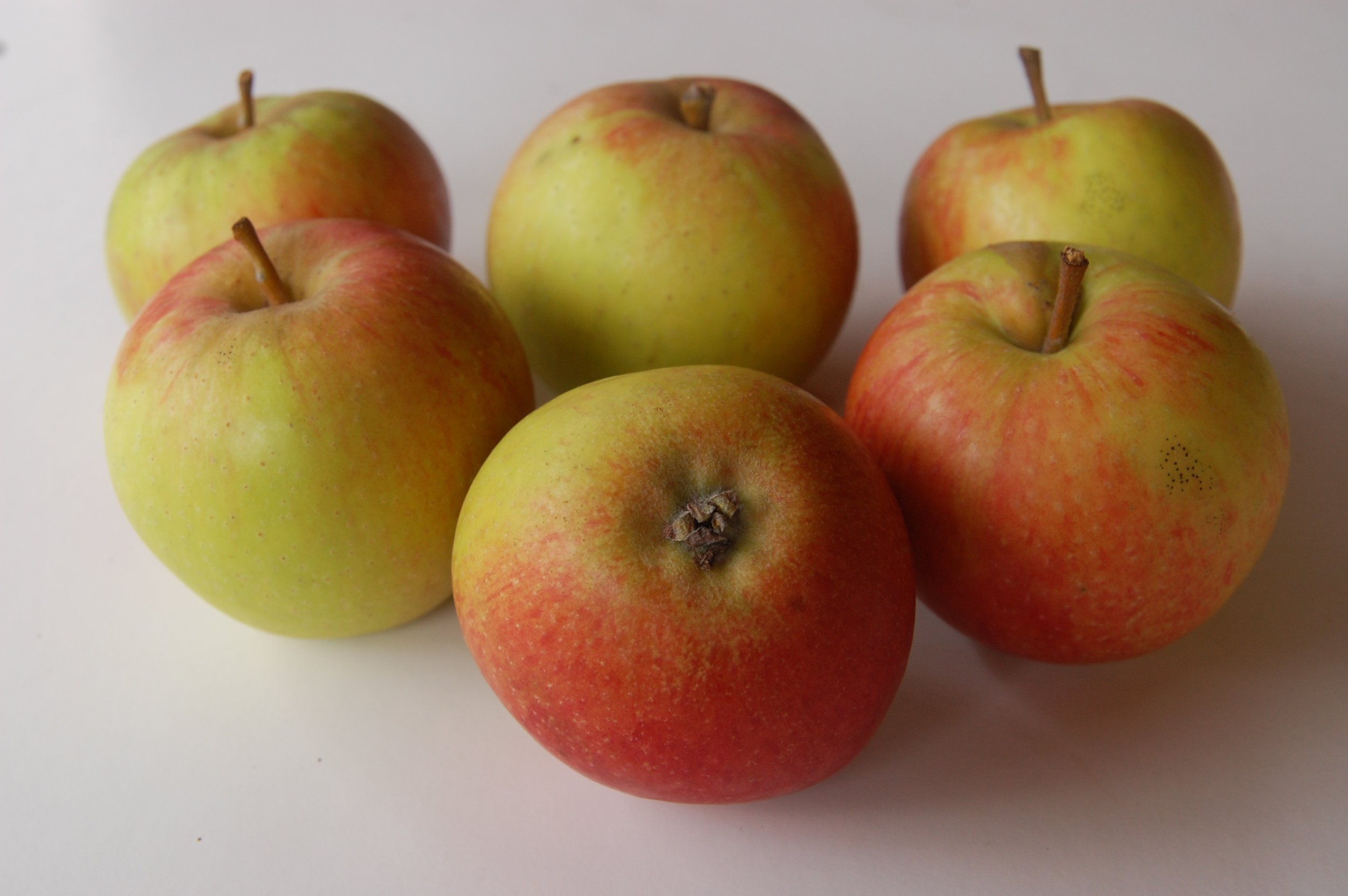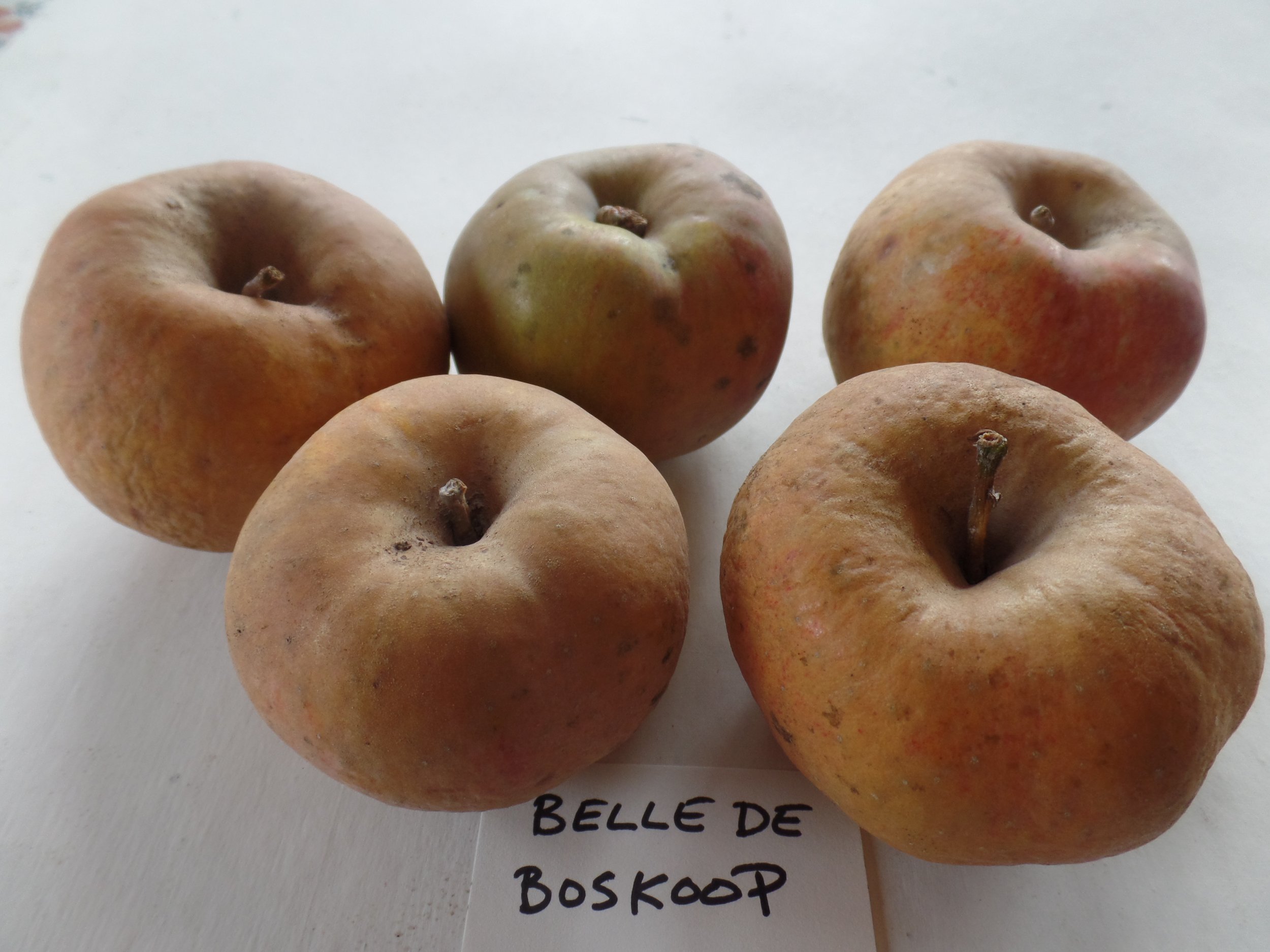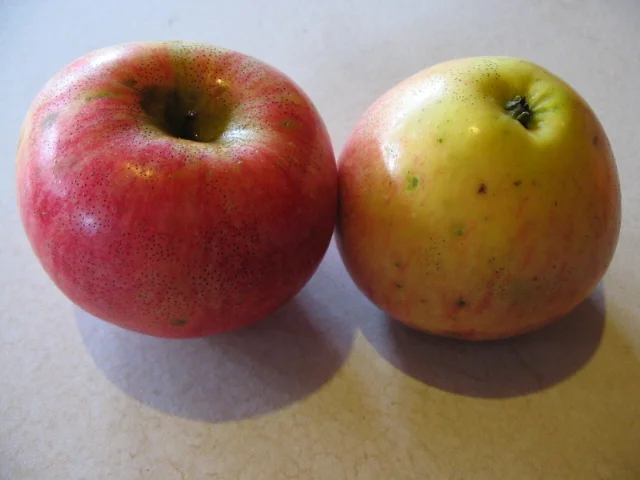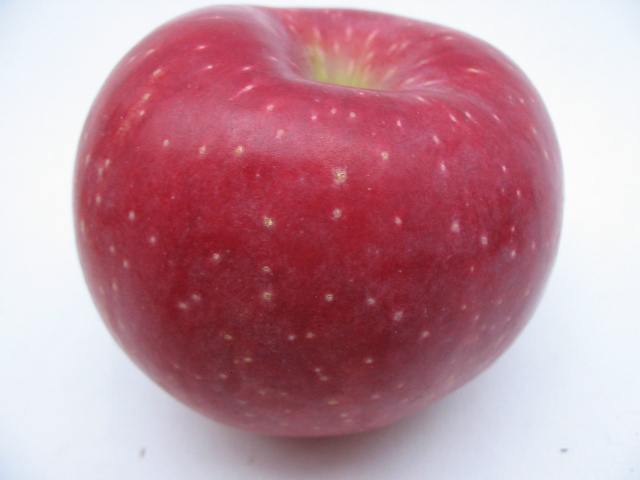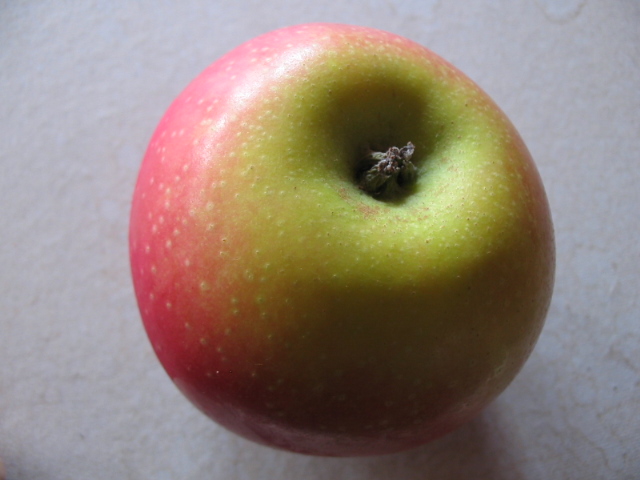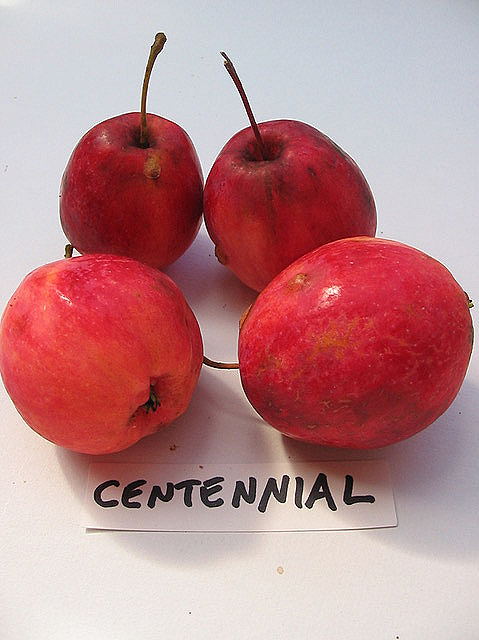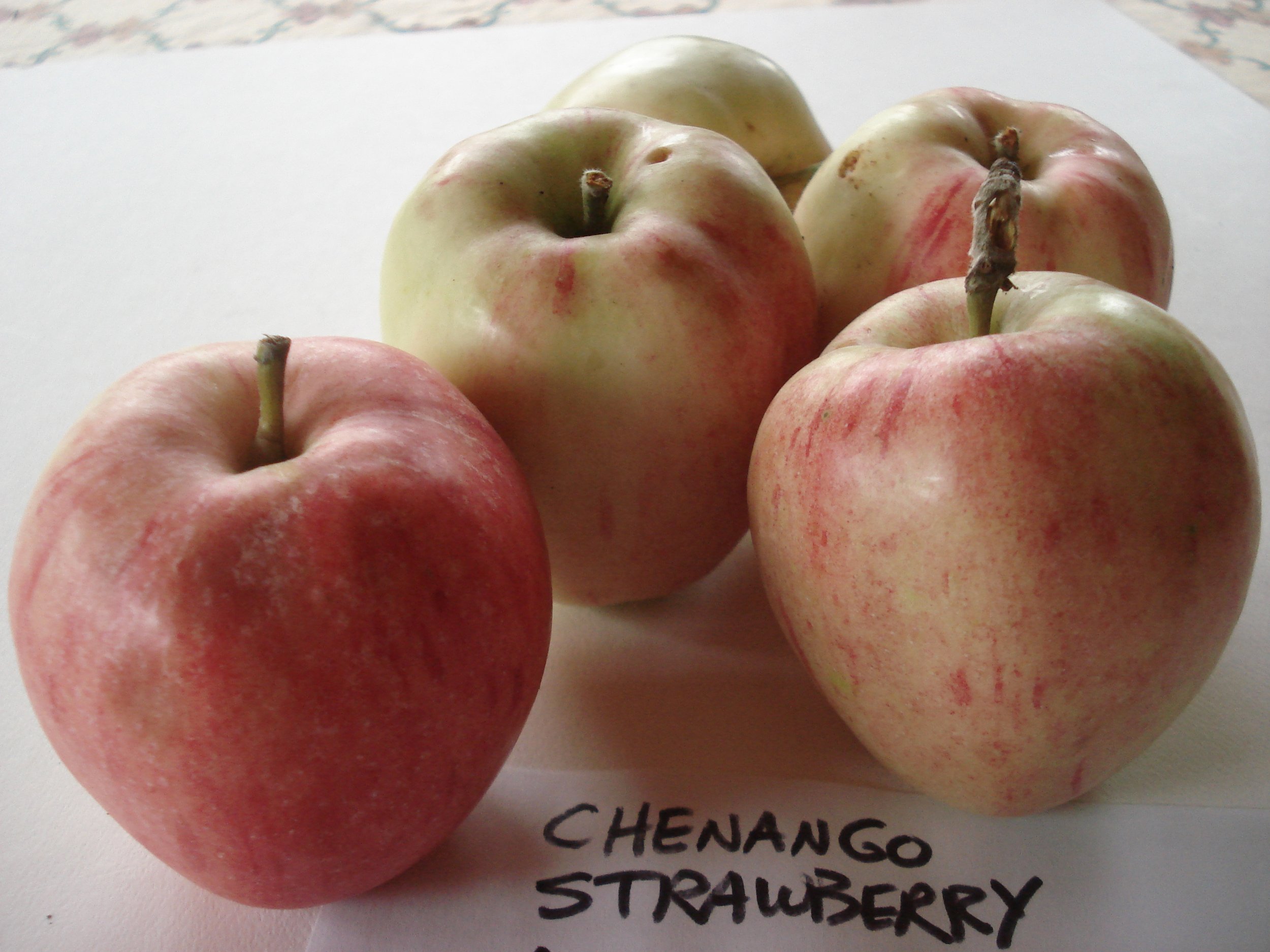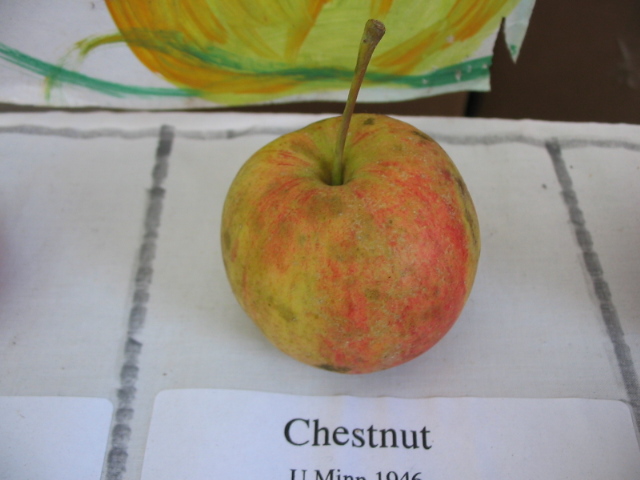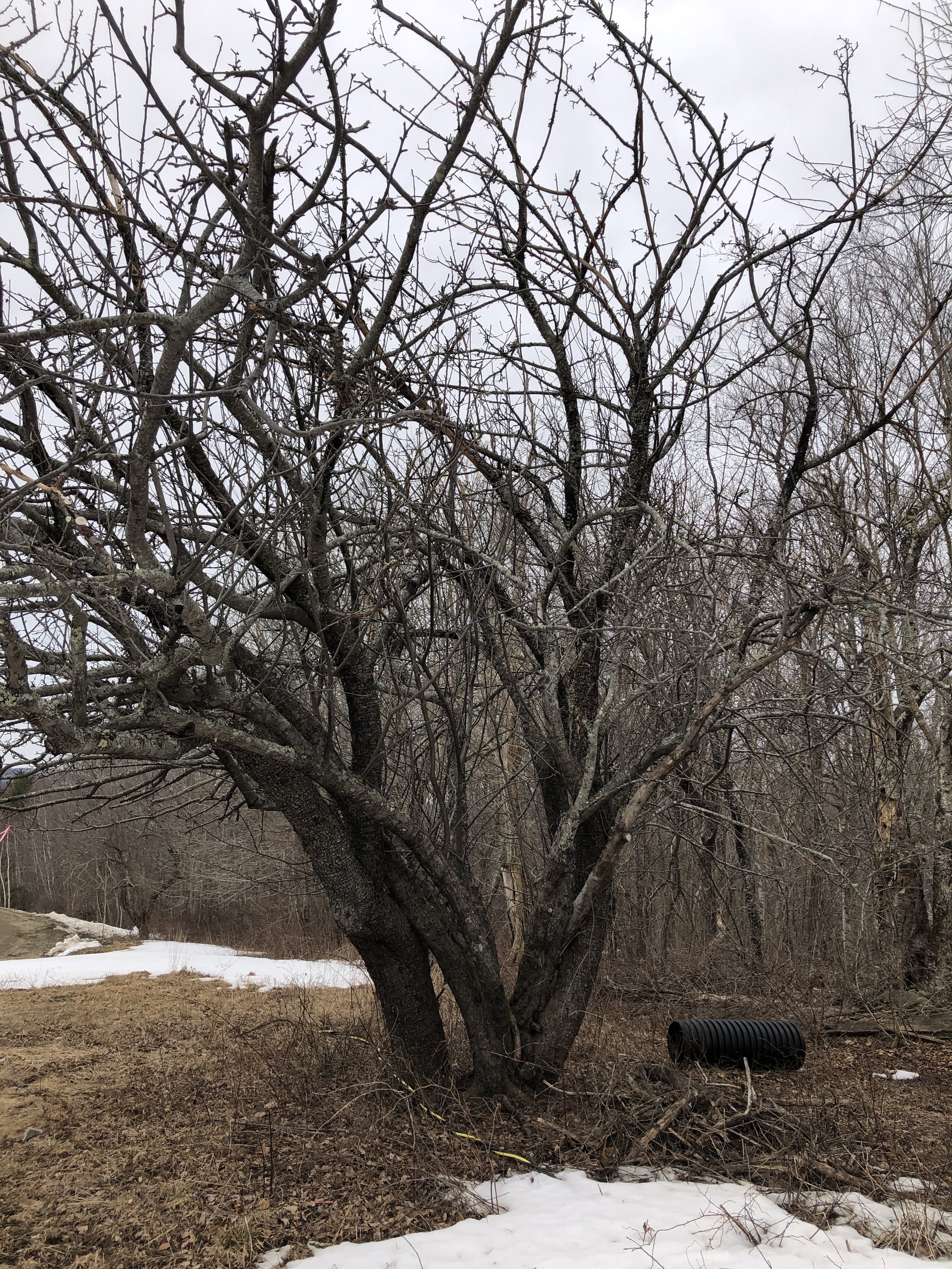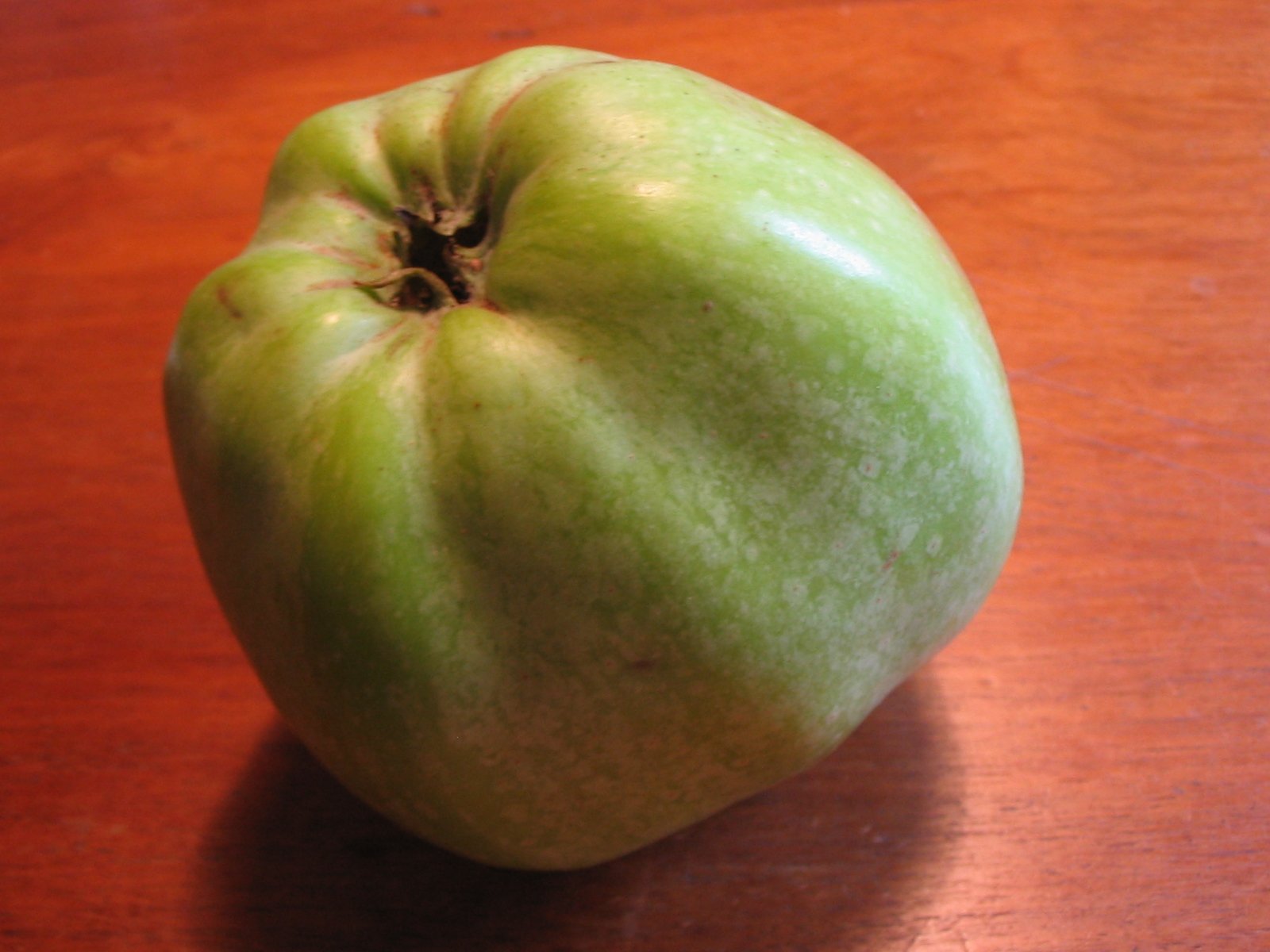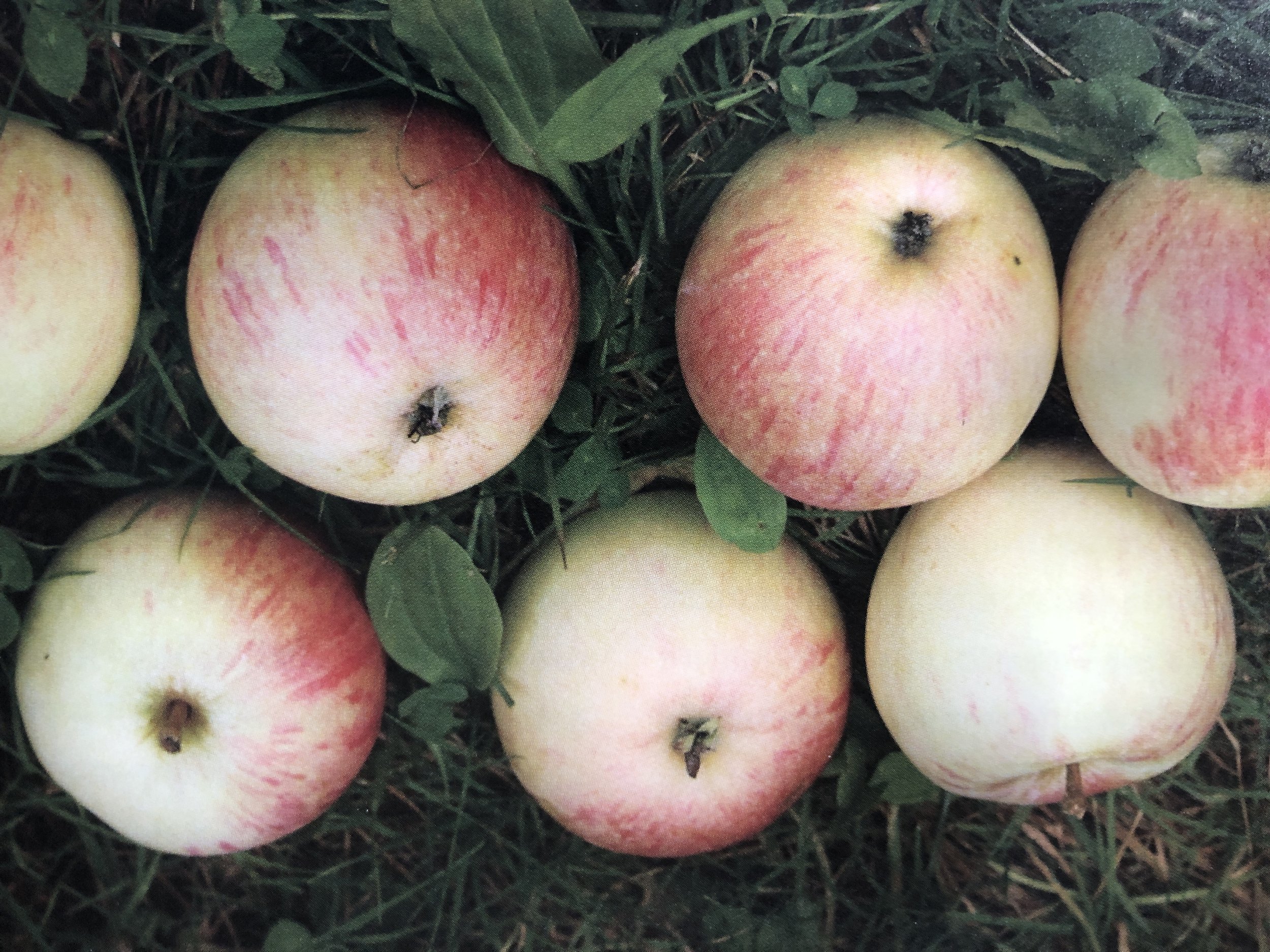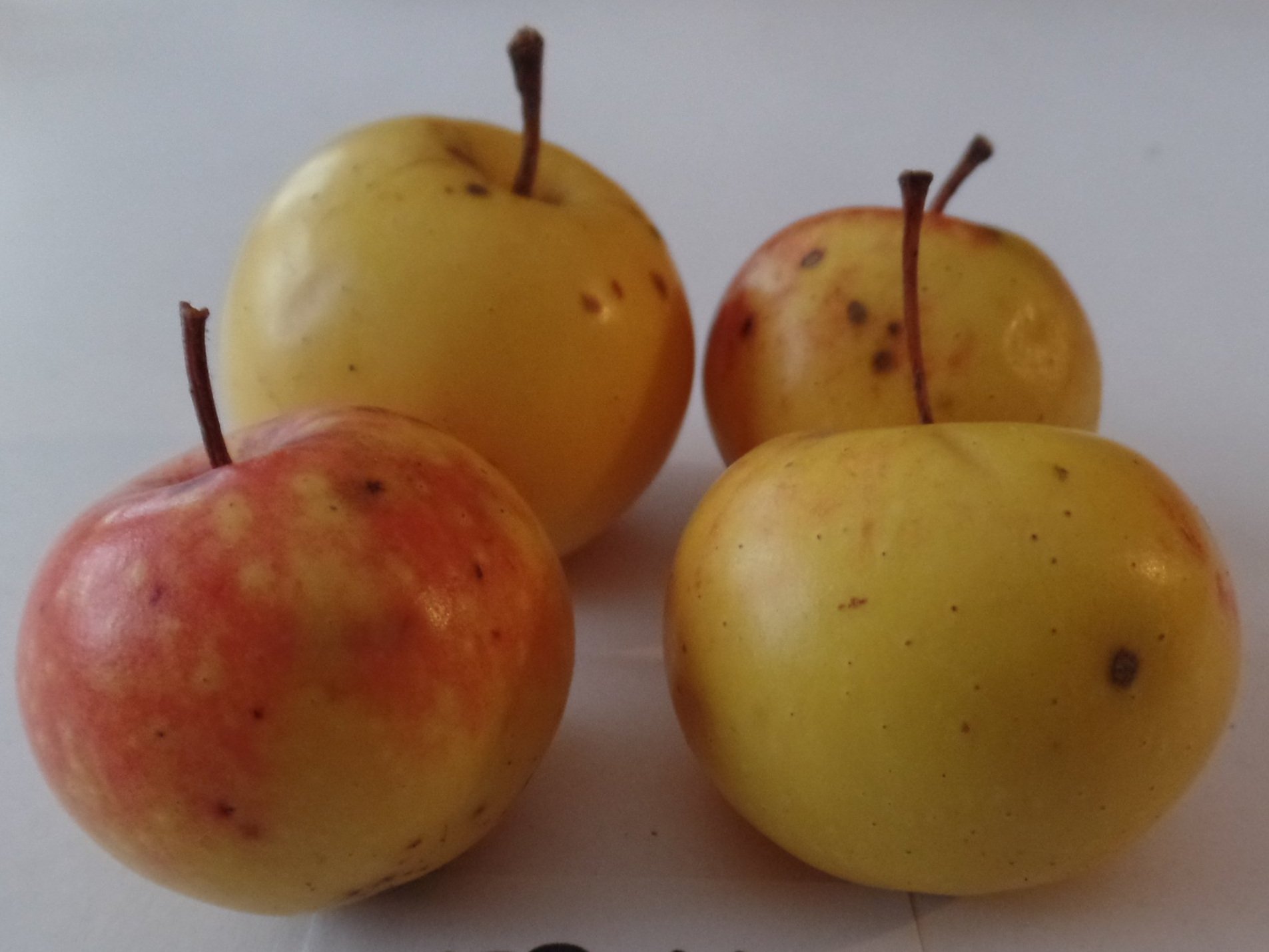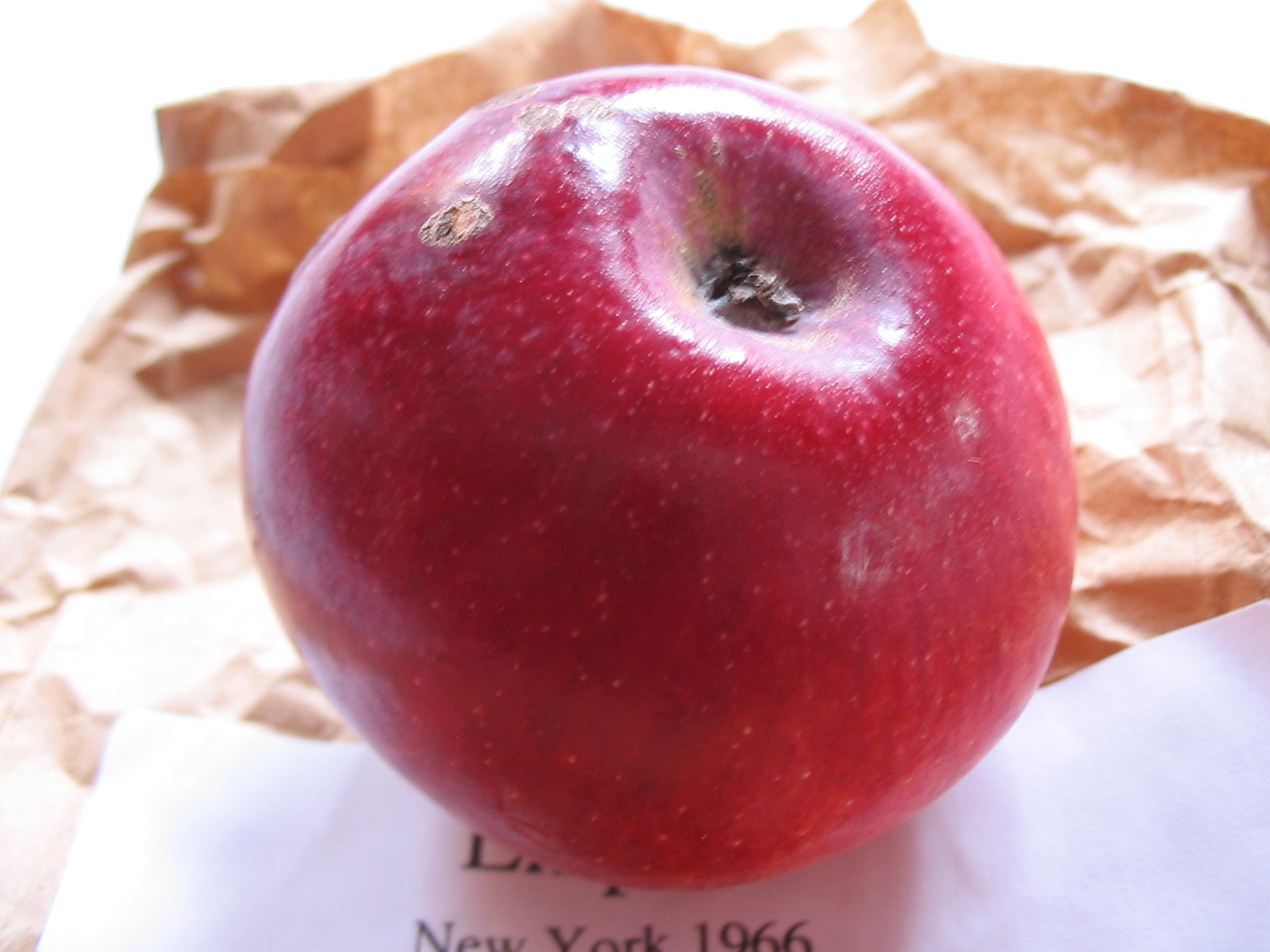Every year at the Common Ground Country Fair John creates a display of apples grown in Maine. Many people come to see the display at the Fedco Trees booth, and it inspires them to share stories about the ancient apples on their farms. At the 1995 fair, Roy Slamm was one of those fair goers who visited the display. He told John about an apple growing on his farm in South Solon that he called Canadian Strawberry, and Roy urged John to come see his trees and taste the apple. That night, John checked through his collection of 19th century literature for references to the apple. Finding none, he dismissed the apple as nothing too important and forgot about it.
The following year Roy returned to the Fair and insisted that John come to his farm. So a few days later John made the drive to South Solon to visit Roy and his Canadian Strawberry trees. The first thing John noticed was that there were three of the trees indicating that they were grafted. When he picked and bit into the barrel-shaped, yellow fruit with the vibrant orange, red striping, John knew he had never seen or tasted this remarkable apple before. That night he wrote in his journal, “went to Roy Slamm’s and got Canadian Strawberry apples. Yes!”
That was a beginning of a fifteen-year friendship between Roy and John, and the beginning of John’s fascination with the Canadian Strawberry apple. Because the apple ripens in late September, right at the time of the Common Ground Fair, John often includes it in the display and offers this excellent dessert fruit to fair goers in the apple tasting. On more than one occasion it has won the taste test, beating out other better-known varieties, such as Cox Orange Pippin and Chestnut.
Eventually John grafted Canadian Strawberry onto a tree at his farm in Palermo and began to spread it around New England and beyond through the Fedco Trees catalog. He also planted a specimen at the MOFGA heritage orchard of Maine apple varieties. Over the years, with Roy’s help, he was able to piece together some information about the apple.
On April 19, 1775 Isaac Davis of Acton, Mass was killed at the Old North Bridge in Concord, Mass. He was the first officer to die during the Revolution. Later he was memorialized as the Minute Man in the statue at the bridge. Around 1800 Isaac’s son Ephraim Davis moved to Solon and started the farm the Davis family continued to occupy for nearly 200 years. About 1910 Nathaniel and Dora Davis planted three grafted Canadian Strawberry trees on the farm. All three trees were still living and producing when Roy and his wife Abby purchased the farm from Elmer and Asher Davis in 1971.
No one may ever know the origin of Canadian Strawberry - or “Strawberries” as Roy and Abby’s neighbors called them. It might be a synonym of some other apple. One old timer who had been picking them for over 50 years thought there was a possibility that the variety came from New York where it was called “New York Strawberry.” There is a vague chance it may be another New York apple called Washington Strawberry, although John compared the two years ago and decided against it. There is also a chance it’s the same as another apple called Autumn Strawberry, although that variety is no longer available for comparison. A few years ago John located one reference to a “Canada Late Strawberry” grown at the Michigan Agricultural College in 1887, but there was no description accompanying the reference.
More likely it is one of the many localized apple varieties that originated in small towns all over the eastern United States as generations of farmers on small, diversified farms observed and selected the best of what grew well on their own land. The best apples were often named as the scions were shared with friends and neighbors or grafted onto other seedlings on the original farm; those names were never written down, but instead passed on in the oral tradition from farmer to farmer. Who knows – Canadian Strawberry might even be from a seed brought from Concord, Mass.
In this day and age of email and text messages, Roy was an anomaly. He regularly wrote cards and letters the old fashioned way. In November 2007 he wrote, “It was a spectacular apple year. Our Canadian Strawberry apple trees outdid themselves in production. Most of the fruit was perfect and delicious. [Roy never sprayed his trees for pests.] Lamentably we lost one of the triad of grand lady trees. The most venerable, hollowed trunk. Fell in a strong windy day.”
Roy was not a pomologist. He was not really a fruit explorer. He was a fine woodworker, artist, good neighbor and a homesteader. He was also a keen observer who took pleasure in life. And he was a persistant guy. Were it not for Roy, The ‘Strawberry’ apple might have been lost forever. He knew that he was the steward of something very special, and he was determined to see that it was never lost. One of the last cards John received from Roy read, “Hey John, A few frozen apples clinging to the gnarled branches with little snow hats above.”
Thank you Roy.





